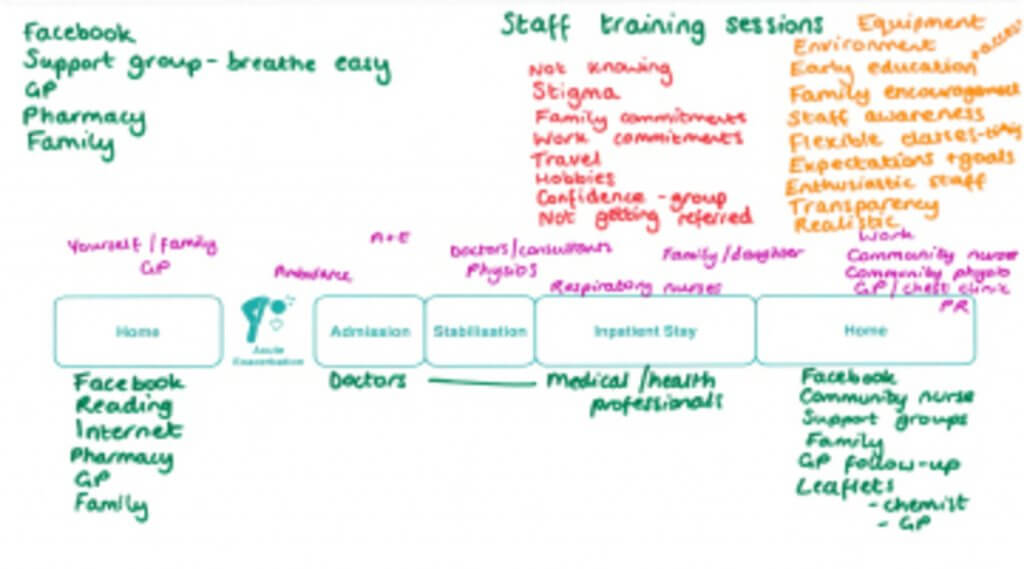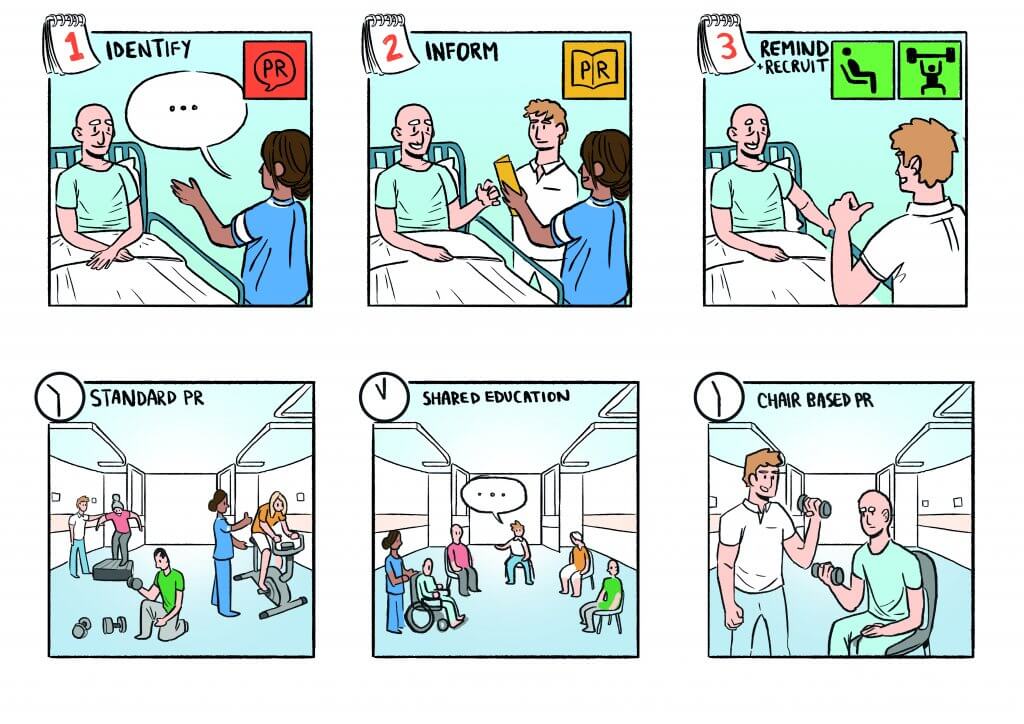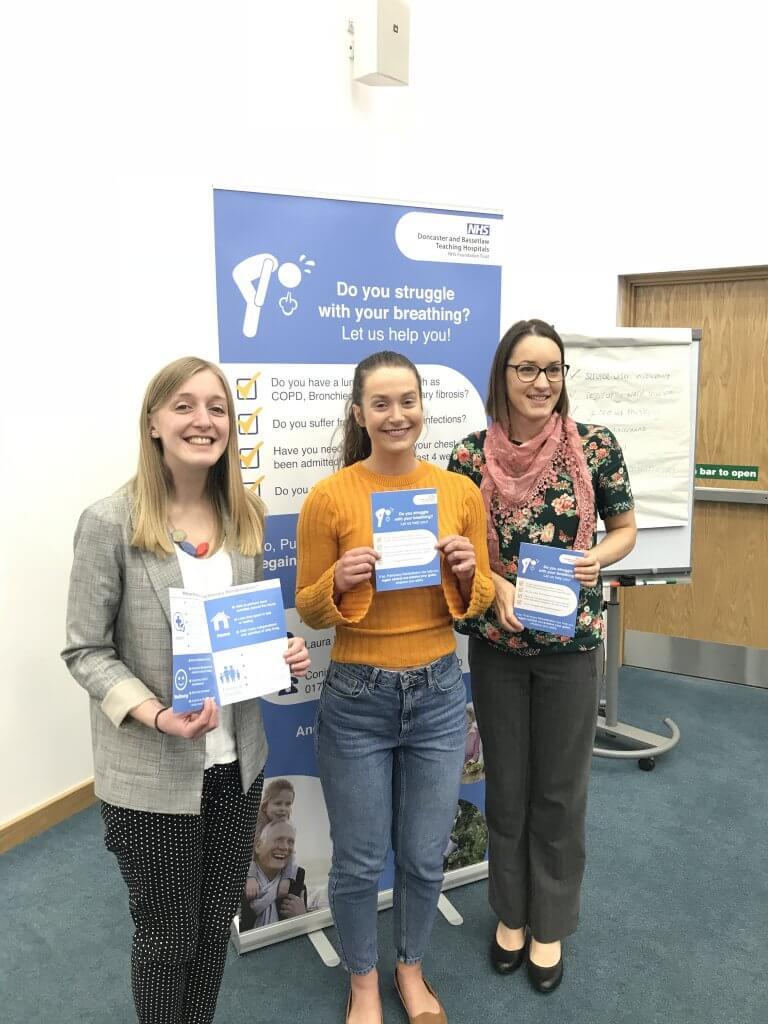This research, funded through the Getting Research into Practice (GRIP) programme, aimed to engage patients and healthcare professionals through a co-production process to enhance referral and uptake of Pulmonary Rehabilitation following an acute exacerbation of Chronic Obstructive Pulmonary Disease (COPD) .
Funded by: National Institute for Health Research Collaborations for Leadership in Applied Research and Care Yorkshire and Humber (NIHR CLAHRC YH).
Project team: Dr Gemma Wheeler and Dan Wolstenholme (Lab4Living team)
Laura Lomas and Jennifer Harris (Doncaster and Bassetlaw Teaching Hospitals NHS Foundation Trust)
Partners: Doncaster and Bassetlaw Teaching Hospitals NHS Foundation Trust.
As of 2012, it is estimated that 1.2 million people in the UK (or 2% of the population) are living with diagnosed COPD. COPD is an umbrella term used to describe progressive lung diseases, and is characterized by increased breathlessness. Whilst COPD is currently incurable, there are many strategies to help manage its symptoms and live well.
An acute exacerbation of COPD, where a person can struggle to get their breath and/or experience a worsening of a chronic cough, requires healthcare professional input and can sometimes lead to hospitalisation.
Pulmonary Rehabilitation (PR) is a supervised programme of light exercise and health education. There is a substantial evidence base promoting PR within several weeks of an acute exacerbation for people with COPD. This can improve health-related quality of life, reduce risk or hospital readmission and improve exercise capacity.
However, there is a failure to translate such research into practice, with poor referral and uptake rates of PR nationally. In addition, there is a paucity of evidence focusing on strategies to address the barriers to uptake and/or referral.
This project is the first to employ a method of co-production to facilitate the implementation of international guidance into practice for post-exacerbation PR.

After conducting initial scoping work including; a literature review; observations within related departments of Doncaster Royal Infirmary (DRI); observations and discussions with patients within PR sessions; and discussions with related support groups (Breathe Easy), key themes emerged to inform two workshops.
Patient representatives with various experiences of lung conditions (and related treatments), healthcare professionals including physiotherapists, respiratory nurses and community nurses together with researchers participated in the workshops and through patient journey mapping and initial idea generation key areas for investigation were identified.

Following this, three key concepts were developed with patients and healthcare professionals over 5 co-design sessions, using bespoke tools to consider the range of stakeholders involved, practicalities of implementation and content of new resources.
Initial prototypes of the these concepts were collaboratively developed and presented to the DRI community, including; an informational campaign to enhance awareness of and motivation for PR; an Inpatient PR scheme to act as a ‘taster session’ within Respiratory Units; and a PR app to support existing PR courses, or to encourage more patients to take part in PR activities at home (with progress tracking and online input from healthcare professionals). There was clear enthusiasm within the DRI community to take these concepts forward and the researchers are currently seeking funding support to continue developing and pilot the concepts with patients and healthcare professionals.

The PRaKTiCaL project was chosen as a case study for the NIHR CLAHRC YH ‘Translating Knowledge into Action’ case book, which is available to download at: http://clahrc-yh.nihr.ac.uk/our-themes/translating-knowledge-into-action/2-casebook
Related project >> GRIP: Developing an education resource for people with Low back pain
Related project >> GRIP: Promoting exercise after stroke and transient ischaemic attack
 to top
to top
